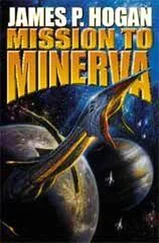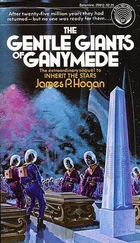The pattern-switching algorithm that Hunt had postulated for moving clusters of activated cells-solid objects, in the Ent world of perception-provided a possible explanation for a range of mystifying phenomena. Shilohin, in reviewing early Thurien processing methods, discovered that it had been common practice for the leading edge of a pattern that was being shifted through the matrix to activate before the trailing edge was switched off. Thus there would be a slight overlap of the two images, causing the pattern to be fractionally longer in the direction of motion than when it was at rest. Moreover, the degree of elongation would increase with the propagation speed. That one fact would account for the absence in the Entoverse of the invariances of dimension with motion-and because of the effects attributed to the planetary rotation that VISAR had inferred, with time and with spatial orientation, too-that gave the Exoverse the regularity and consistency that made possible the organized body of knowledge called science, the construction of machines, and the technologies that sprang from using them.
What about the apparent ability of solid objects in the Entoverse to penetrate one another on occasions? It was not difficult to see how that might happen if one of the “quantum numbers” defining an activated cell was some kind of priority indicator. Two objects meeting would, in effect, be competing to possess the same cells. If, as was usually the case, they were composed of equal-priority elements, they would simply bounce apart. But if one happened to be designated higher-priority, it would “borrow” the volume previously belonging to the other object for as long as their parts coincided, returning it to its previous condition upon separation. Similar causes could be found for such other phenomena as the differing “affinities” of some materials for others, the inconsistencies of cause and effect that made prediction in the Entoverse a risky business, and the sudden discontinuities that appeared as cataclysms and catastrophes.
And when the scientists got down to talking more about it, the apparent miracle-workings of some of the Ents began to sound less farfetched. The Ents were composed at the elementary level of information-processing quanta, after all, and it did not seem so strange that they should be able to influence things around them by what they would perceive as thought. Possibly, for example, they were able to change the activity levels of the constituent cells in an object, and thereby modulate its response to “gravity,” or endow it with some other radiated force. That would also go a long way toward explaining the ayatollahs’ unshakable faith in the validity of magic. In their world, “magical” effects were commonplace. It might also have had something to do with their uncanny aptitude for interacting directly with the inner processing functions of a Thurien computer, too.
“You know, I’m getting a feeling that a lot of what we dismiss as myth back on Earth wasn’t mythical at all,” Gina said to Hunt at one point when they broke for coffee. “The war with the Titans, the menagerie around Mount Olympus, gods throwing mountains down out of the sky and swallowing up cities… those things really happened. Except it was in a different place. The agents they sent to Earth included Ents, and the things the Ents talked about from their own past got mixed up with the real history going on around them.”
A little later Hunt remarked, “Erwin Schrodinger thought that the reason our macroscopic world is so much bigger than the quantum scale is because the orderliness that we need to make sense of things could only evolve at a level where quantum fluctuations are swamped out. So, order emerged from underlying uncertainty. But if this Entoverse business turns out to be right, it means that a universe of macroscopic unpredictability evolved out of the mathematically precise operations of computation. Ironic, that, when you think about it, isn’t it?”
In the same kind of way that the ubiquitous photon fluid carried energy and information through the Exoverse, the sub fabric of the Entoverse consisted of vast, dynamically transforming pattern streams of data. The datastreams were injected from the outside and, as they were processed through the cellular ocean of the matrix, flowed and converged toward output zones where they were extracted back to the external Exoverse.
That immediately suggested a parallel to mass-energy being sucked into black holes in the familiar universe. Duncan speculated that the purple spiral that Nixie described in the sky was an accretion vortex forming at one of the data outlets. In that case, were the Entoverse’s “stars” the inlets? If so, it would presumably have become a lot darker for the inhabitants in the time since the Ganymeans withdrew JEVEX. Interestingly, MacArthur, a recently emerged ayatollah, had raved on at one point about the gods putting the stars out.
Nixie had described certain “families” of stars that oscillated about and through the brightest member of the group on a one-year cycle. From the approximate positions and seasons that she gave, ZORAC generated visual simulations which with some trial and error matched her recollections closely. The results were compatible with a model in which the “star” that Phantasmagoria orbited existed as one data-inlet point of many arranged in a regular cubical lattice throughout the matrix. Stars belonging to the same row in the grid would appear to come together and separate again as the planet passed through a point in line with them. Such an arrangement of inlets and outlets would have been efficient for distributing the workload evenly through the processing volume.
That left one final mystery that the team felt should have at least a tentative explanation before they approached Calazar: How could the Ents have become aware that an Exoverse existed, and have managed to escape into it? Surprisingly, it was Danchekker who proposed an answer, after talking at length with Nixie. They presented their conclusions to Hunt, Garuth, and Shilohin in Garuth’s office at lunchtime the next day, when they reconvened after snatching a few hours of sleep in the morning.
Danchekker addressed the group standing, adopting his characteristic lecturer pose, his hands loosely clasping the lapels of his jacket. Garuth listened from behind his desk, while Shilohin sat across from him in a chair pushed to one side. Nixie was perched on another chair, swiveled around to face the room from a panel of screens taking up part of one wall. Hunt, arms folded, leaned with his back against the door. One of the last things Caldwell had said was that about the only thing left for Hunt to bring back this time would be a universe. Hunt had replied jokingly that it was a pretty tall order.
“The Ents evolved as natural creatures of their world, which had come into being inside a high-density, high-throughput, pattern-processing, computing matrix,” Danchekker said. He was speaking as if the hypothesis were fact, in effect rehearsing the team in its supporting role to Garuth, who intended going to Calazar immediately. “In the process, they developed an ability to read and interpret the flows of information passing through their world, in a similar way to that in which creatures of our world learned to read energy flows-photon streams. Now, a primary function of the matrix within which this took place was the handling of huge volumes of neural input-output traffic. In other words, those information streams flowed into and out of the Jevlenese minds coupled into the system. The streams carried coded representations of sensory impressions, concepts, and perceptions derived from the world outside. Some of the more gifted Ents learned to ‘tune in,’ as it were, to those currents-to adjust their own mental processes to a sympathetic mode which enabled them to extract information which they found to be intelligible.”
Читать дальше











